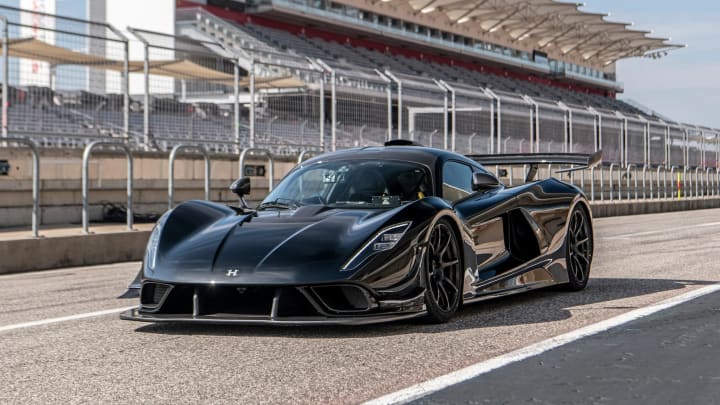250MPH Hennessey Venom F5 Crash: First Responders on the Scene

In a high-speed incident at the Kennedy Space Center, Florida, earlier this month, a test of the Hennessey Venom F5 turned precarious when the driver lost control while pushing the vehicle to approximately 250 mph. The 1,817-horsepower supercar, which was under testing for a new aerodynamic setup, dramatically crashed due to a sudden loss of downforce.
Miraculously, the test driver emerged unscathed from the wreckage, a testament to the vehicle's robust design. The Venom F5, introduced in 2020, is one of the most powerful and highly-anticipated supercars, claiming a top speed potential of 311 mph, though this has yet to be officially tested.
John Hennessey, the mind behind the powerhouse vehicle, reflected on the incident and the vehicle's engineering.
"I am very grateful to our team of engineers and technicians who have designed and built an amazingly strong vehicle," he stated.
Further commending the quick actions of the first responders and Kennedy Space Center staff, Hennessey added, “We are also very thankful to the first responders and staff at KSC for their quick response to ensure everyone’s safety." Their promptitude and professionalism ensured that the aftermath of the crash was managed efficiently and safely, preventing any further potential hazards.
At this juncture, the specific factors contributing to the crash are still under investigation. The team is diligently analyzing data to pinpoint the precise cause of the downforce loss which led to the driver losing control. This setback comes amid Hennessey's high aspirations for the Venom F5 to breach the 300 mph barrier, positioning it potentially as the fastest production vehicle in the world.
Currently, the focus remains on assessing the damage to the Venom F5 and preparing for future tests which will hopefully allow it to reach and possibly exceed the intended speeds. The anticipation for these future tests is palpable, as they promise to not only push the boundaries of automotive engineering but also to possibly set new records in speed.
